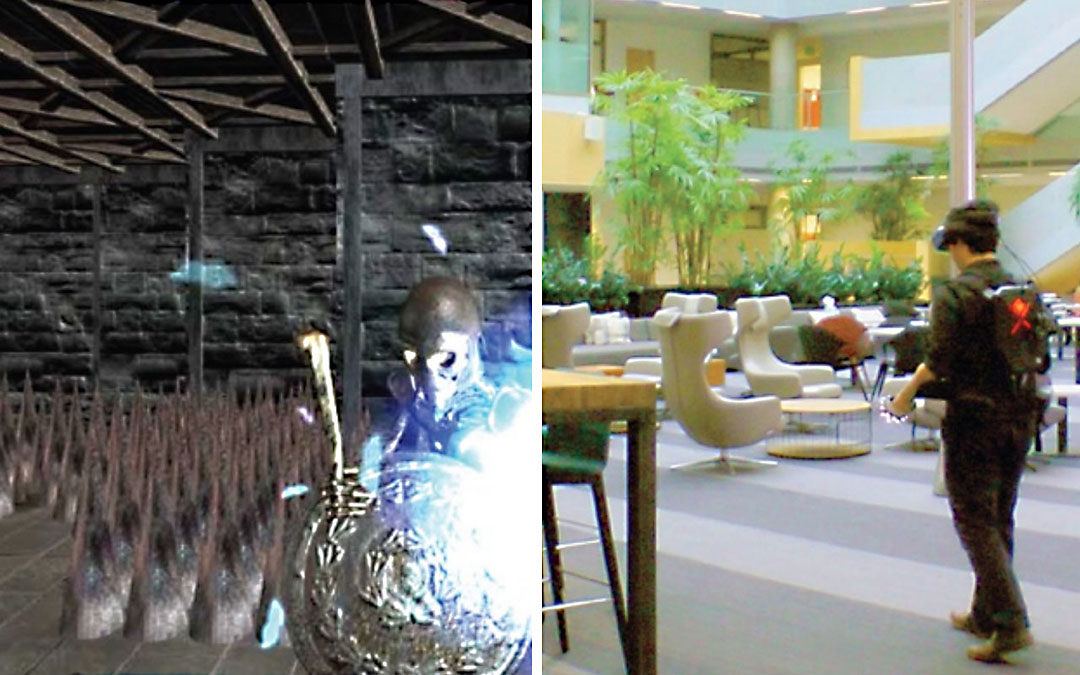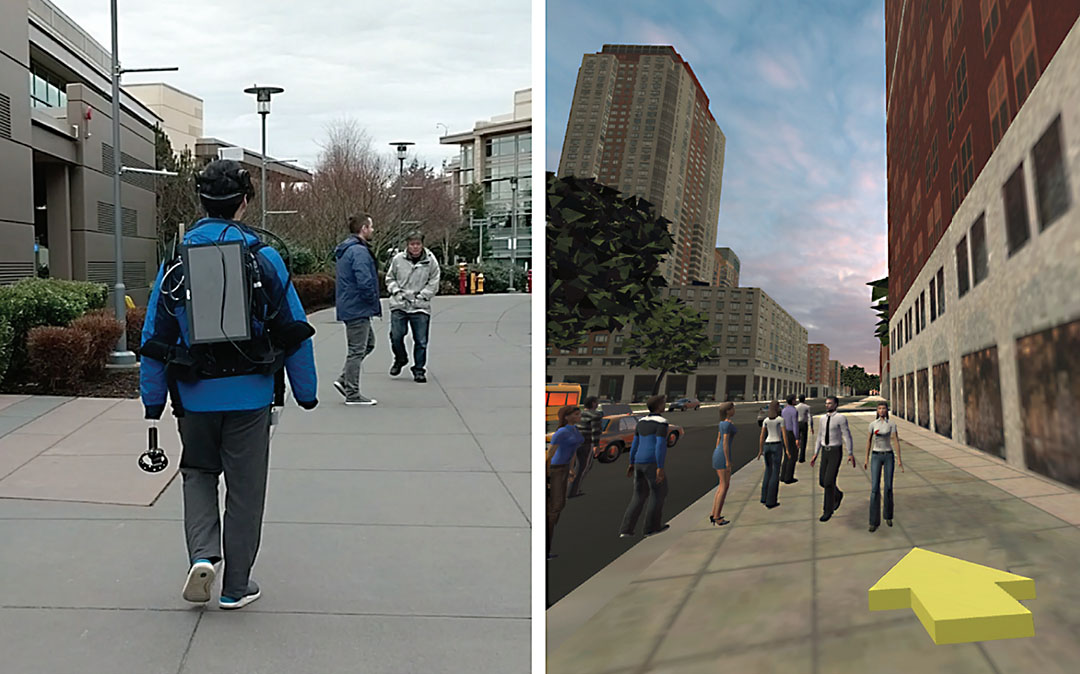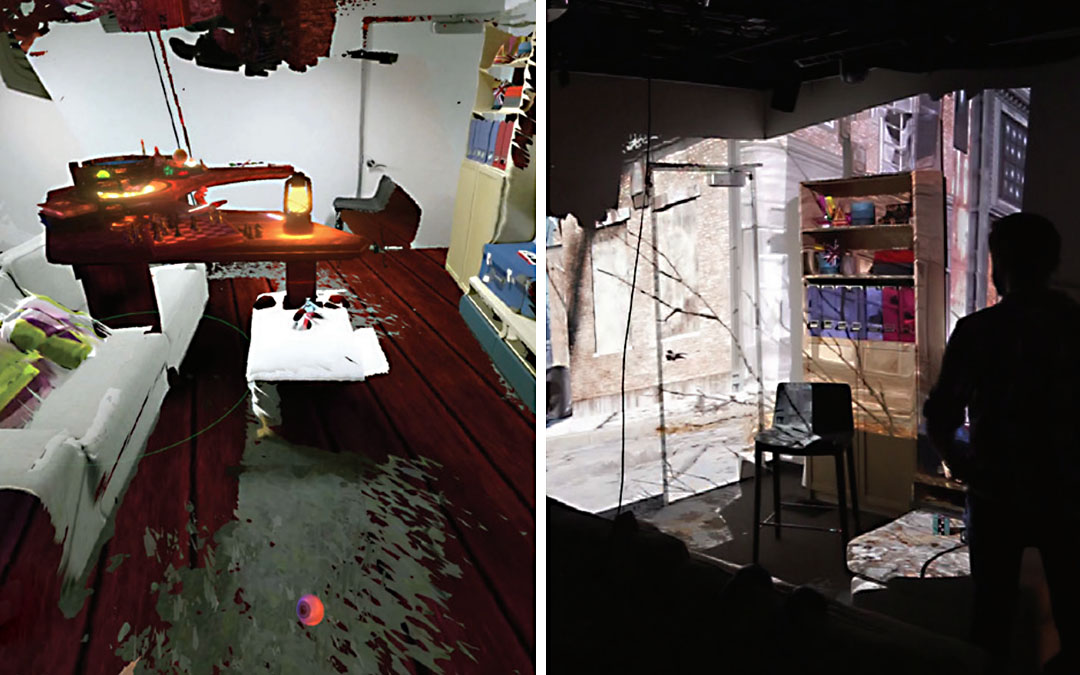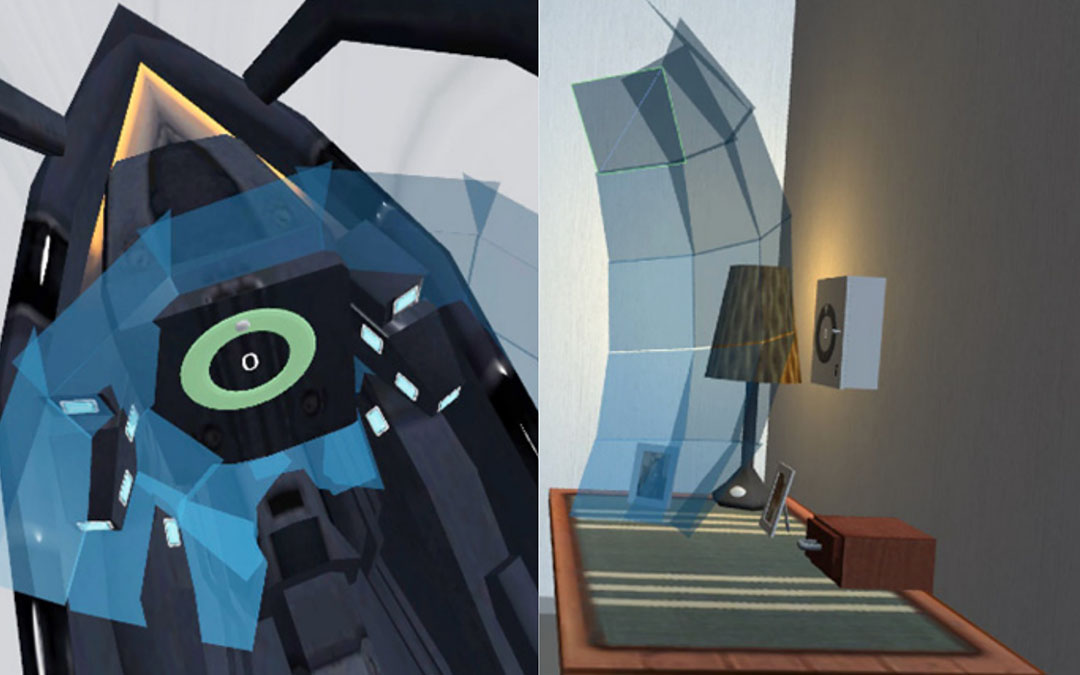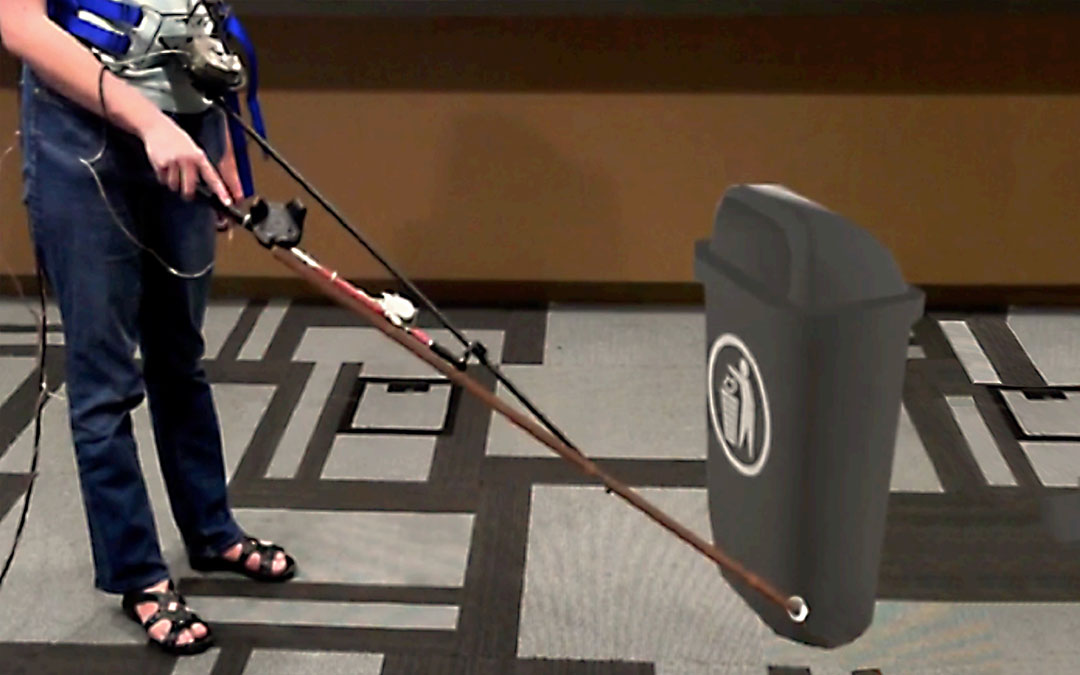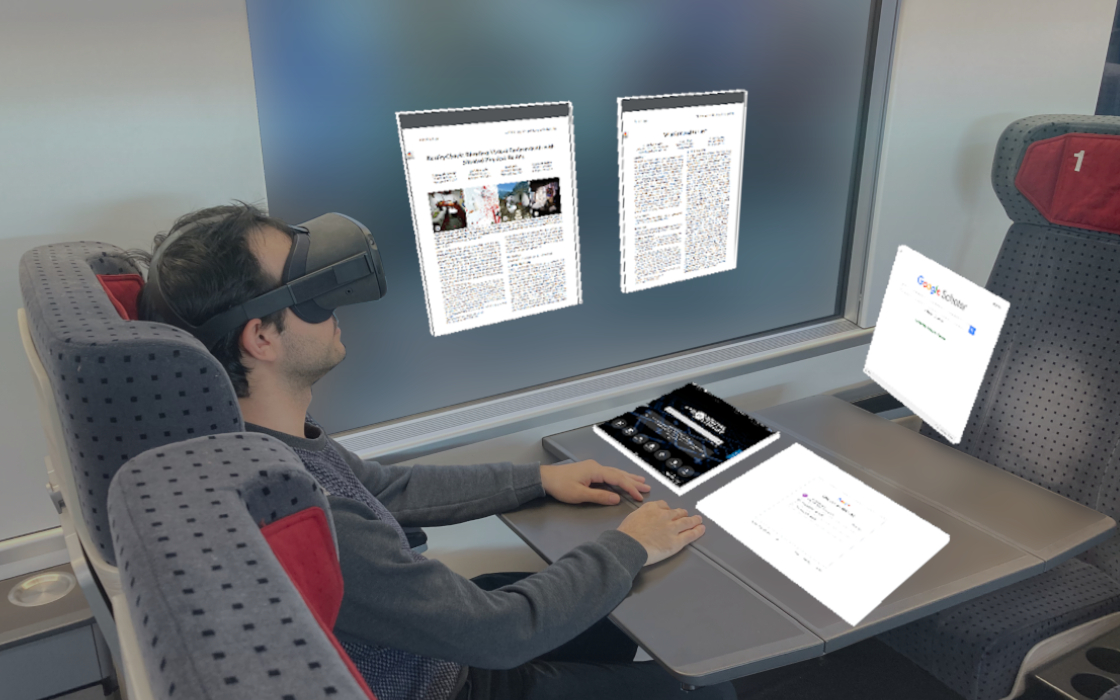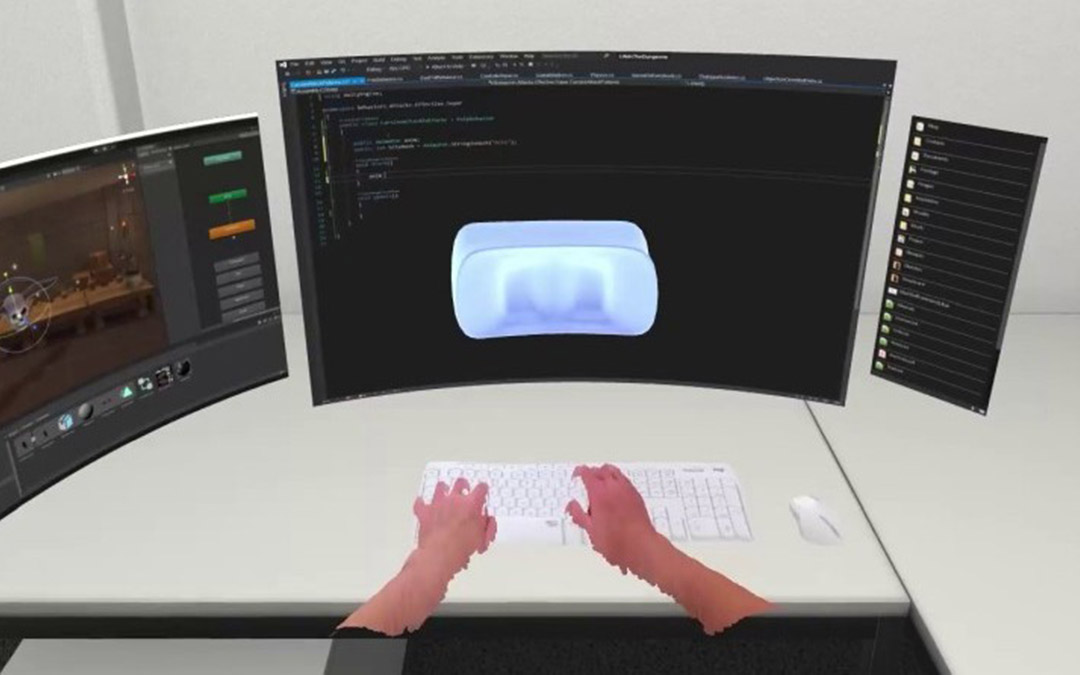VRoamer
Generating On-The-Fly VR Experiences While Walking inside Large, Unknown Real-World Building Environments
IEEE VR 2019Abstract
Procedural generation in virtual reality (VR) has been used to adapt the virtual world to various indoor environments, fitting different geometries and interiors with virtual environments. However, such applications require that the physical environment be known or pre-scanned prior to use to then generate the corresponding virtual scene, thus restricting the virtual experience to a controlled space. In this paper, we present VRoamer, which enables users to walk unseen physical spaces for which VRoamer procedurally generates a virtual scene on-the-fly. Scaling to the size of office buildings, VRoamer extracts walkable areas and detects physical obstacles in real time, instantiates pre-authored virtual rooms if their sizes fit physically walkable areas or otherwise generates virtual corridors and doors that lead to undiscovered physical areas. The use of these virtual structures allows VRoamer to (1) temporarily block users’ passage, thus slowing them down while increasing VRoamer’s insight into newly discovered physical areas, (2) prevent users from seeing changes beyond the current virtual scene, and (3) obfuscate the appearance of physical environments. VRoamer animates virtual objects to reflect dynamically discovered changes of the physical environment, such as people walking by or obstacles that become apparent. In our proof-of-concept study, participants were able to walk long distances through a procedurally generated dungeon experience and reported high levels of immersion.
Video
Reference
Lung-Pan Cheng, Eyal Ofek, Christian Holz, and Andy Wilson. VRoamer: Generating On-The-Fly VR Experiences While Walking inside Large, Unknown Real-World Building Environments. In Conference on Virtual Reality and 3D User Interfaces 2019 (IEEE VR).
